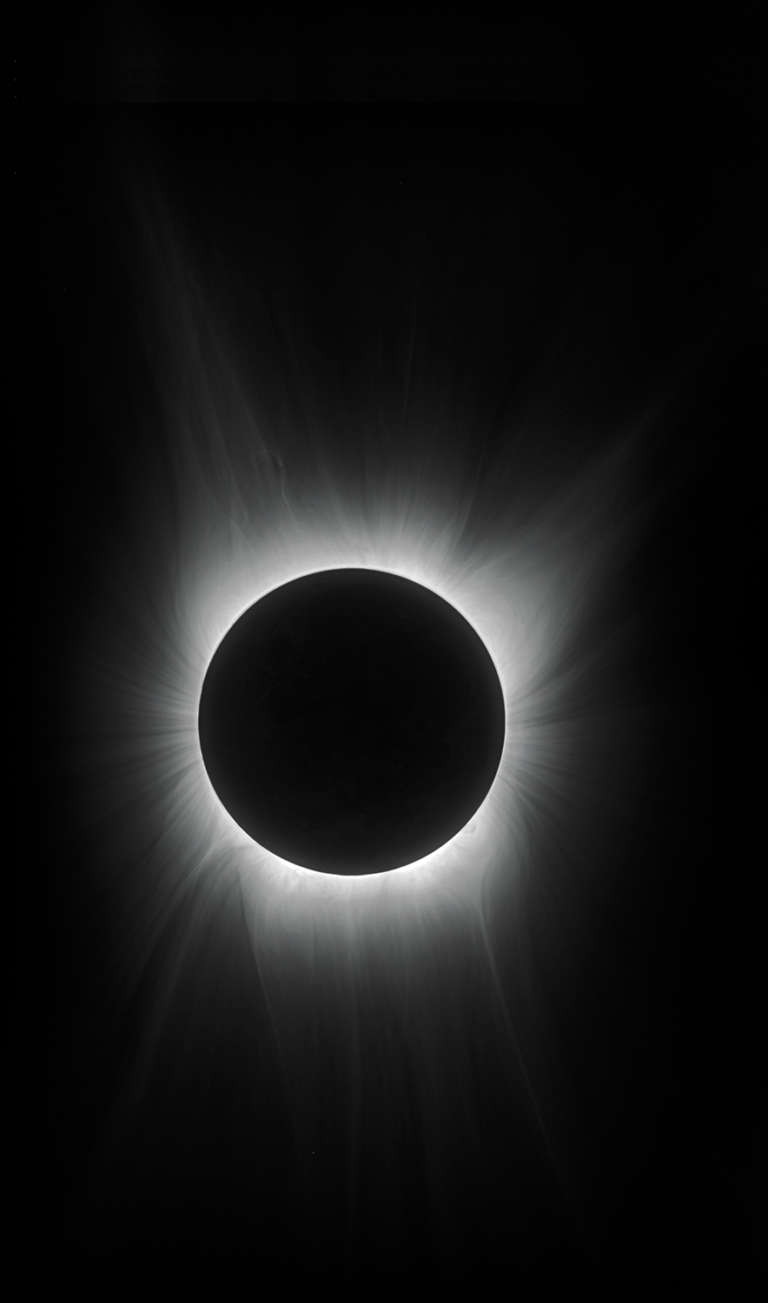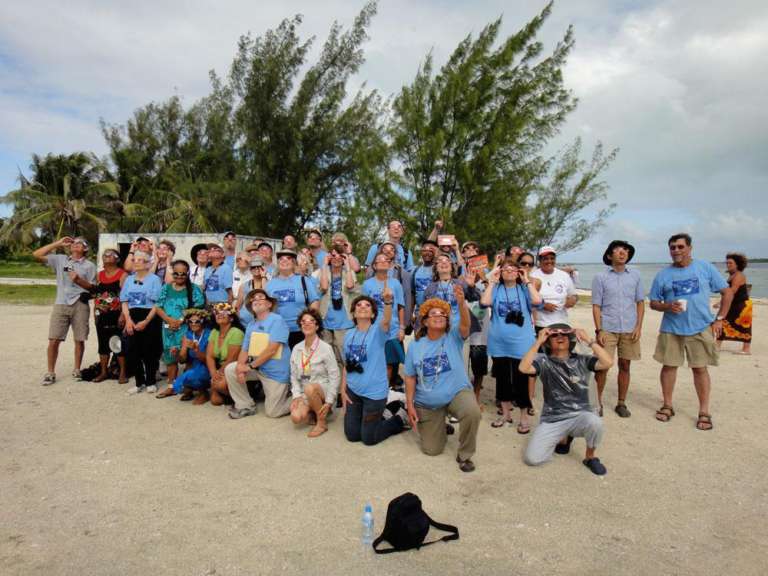Jim Bell • Jul 30, 2010
Umbra in Paradise: The July 11, 2010 Planetary Society Solar Eclipse Expedition
If you've never seen a total eclipse of the Sun, make sure to put one on your bucket list! I was fortunate enough to be able to join a group of nearly 50 members of the Planetary Society, the American Association for the Advancement of Science, and other astronomy and space aficionados to view the July 11 total eclipse in the South Pacific, from a remote atoll called Anaa. It was an amazing and unforgettable experience!
The week-long expedition was led by Bob Nansen from Betchart Expeditions and Frank Murphy from Tahiti Expeditions. I represented the Planetary Society on the trip, gave a series of astronomy and planetary science talks over the course of the trip, and generally tried to be the "go-to guy" for questions related to astronomy and space exploration.
Bob and Frank first took the group around Tahiti and nearby Moorea, showcasing the history and physical and cultural beauty of these remote French Polynesian islands. We saw wonderful examples of local songs, dance, and craftsmanship and soaked in the rugged and lush volcanic/jungle landscape. Highlights for me included a visit to the Paul Gauguin museum where we learned about the life and work of an important post-Impressionist artist who is so often associated with Tahiti, and a visit to Point Venus, the exact spot where Captain James Cook and his crew set up an astronomical observatory to observe the 1769 transit of Venus.
Standing on the idyllic beach there with the coconut palms swaying in the gentle breeze and the sound of drums beating in the distance, it was easy to imagine the 18th century tri-masted research vessel Endeavour still anchored there in the harbor, where little appears to have changed in more than 240 years. It was a poignant moment for me in other ways, too, as the Endeavour was eventually scuttled in Narragansett Bay in my home state of Rhode Island, and, because of Cook's voyage, Endeavour is the name given to the large crater that is the next primary destination of the Mars Exploration Rover Opportunity (I am a member of the rover team).
Then we headed off to Anaa, a 30-by-7-kilometer, oval-shaped atoll of low-lying land enclosing a beautiful blue-green lagoon. Tahiti and Moorea were not in the path of the total eclipse, and so the group had to charter a special flight to travel 350 kilometers east from Tahiti to view the event from Anaa.
Our visit to Anaa was magical in so many ways. The atoll has about 450 permanent residents, many of whom make their living by fishing and coconut farming. They only get occasional tourists, so the arrival of our group of 50 people was an exceptional event! They opened their community to us and welcomed us in the warmest, most hospitable ways imaginable, transforming their school into a hotel, and their town center into a restaurant and dance/music stage. Frank's wife, Hinano, a native of the Tuamoto island archipelago that includes Anaa, joined us there and helped us to really understand the local history and traditions and to make some direct personal connections with many of the islanders.
Everywhere we went -- usually on foot -- people were friendly and talkative (I got to practice my French), and the natural scenery was amazing. On one of the days the local fishermen assembled a fleet of their small boats and ferried us all to the southern tip of the atoll where we explored a pristine and secluded white sand coral beach and dined on the most amazing (and fresh!) local fish and sweet coconut bread. It was like something out of a postcard -- I found it hard to believe that there are such beautiful, serene, and unpopulated places still left on planet Earth.
When eclipse day arrived we were all excited and nervous. It was an early morning eclipse, with totality occurring around 8:30 a.m. and the Sun only about 25 degrees above the azure blue Pacific ocean. There was a real sense of drama as we assembled on the pier near the main town center, because there were a lot of clouds building on the eastern horizon shortly after sunrise. Bob and Frank and the local and regional mayors had been sure to pass out special eclipse glasses to everyone on the atoll to make sure they could view the Sun safely, and many members of our group were setting up special cameras, binoculars, and small telescopes to take in the event.
We whooped and danced at the first contact of the Moon's limb against the disk of the Sun, but then the clouds rolled in about ten minutes later and we could only occasionally glimpse the Moon's progress. Would we get clouded out? The tension built.
20 minutes to go...10 minutes to go...then, around 5 minutes before totality the eclipse gods smiled on us and a large gap in the clouds appeared, and we realized that we'd get a great view of the eclipse after all!
It is very hard to describe in words the sequence of events that unfolded next. As this was my first total solar eclipse, many of the "veteran" eclipse viewers on the trip recommended that I not worry about cameras or telescopes but instead focus on the eclipse as a wide-field, visual event, using my naked eyes (and solar filtered glasses!) to take in as much of the sky and horizon as possible during the precious 150 seconds of totality that we would experience.
It was great advice. In the last few minutes before totality, as 90%, then 95%, then 98% of the Sun was blocked, I noticed the eerie twilight-like appearance of the landscape, and the super-sharp shadows cast by the now-giant pinhole light in the sky. Then, as the Moon's disk completely covered the Sun, I removed my glasses and stood, amazed, as we were engulfed by the Moon's shadow. It was as if someone offstage, on cue, pulled a giant lever to turn off the sky, and day faded into night. Stars and planets appeared, chickens started crowing, people all around me started jumping and yelling. I got kind of emotional -- it was a truly astounding natural event, unlike anything that one experiences in everyday life when looking up in the sky or around at the landscape.
Using my binoculars I could make out the Sun's delicate atmosphere -- the corona -- and could see several small flares or prominences emerging from above the Moon's limb. We could see sunlight ringing the horizon off in the distance. It was surreal, serene, awesome, inspirational, joyous....I ran out of adjectives. In such a remote and welcoming environment, and surrounded by so many new friends, we felt like we were standing on the most special place on Earth at exactly the right moment in time. Wow.

And it was over so quickly! The Sun re-emerged (I saw a beautiful, rainbow-colored diamond ring through my binoculars) and daytime returned to the landscape. And within a few minutes after totality, the clouds rolled in again and prevented us from seeing most of the second half of the Moon's remaining transit. But it was OK -- we knew that those two celestial dancers would return to their proper positions. We were just delighted to have been able to witness the main act.

Within a few hours it was time to leave our friends on Anaa and head back to Tahiti and eventually home. The locals threw us a farewell feast, and there were songs and speeches and many tears as we reminisced about our time together and the special bonds of friendship and celestial camaraderie that we had made. They invited us to come back and visit their beautiful atoll again, and to invite our friends and families to visit as well because they are trying to grow their tourism industry. So, if you're looking for seclusion, serenity, friendship, and South Pacific authenticity, eclipse or not, consider visiting Anaa! You will be welcomed like family.
I can't say enough about the folks at Betchart Expeditions and Tahiti Expeditions and the great job that they did providing the group with such unique and special "off the beaten path" experiences. Many of the group were regulars on these kinds of expeditions, and they said that great experiences like this are typical when traveling with Betchart. I think it's great that the Planetary Society is partnered with such amazing and dedicated travel professionals!
Even though I checked off "total solar eclipse" from my bucket list, I have to admit that I'm hooked. When's the next one? November 2012 in northern Australia...when's the next one in North America? August, 2017, with the Moon's shadow sweeping from Oregon all the way to Georgia...find the details at http://eclipse.gsfc.nasa.gov, join a Planetary Society expedition, and catch one of nature's most spectacular shows! You'll be hooked too!
The Time is Now.
As a Planetary Defender, you’re part of our mission to decrease the risk of Earth being hit by an asteroid or comet.
Donate Today

 Explore Worlds
Explore Worlds Find Life
Find Life Defend Earth
Defend Earth

